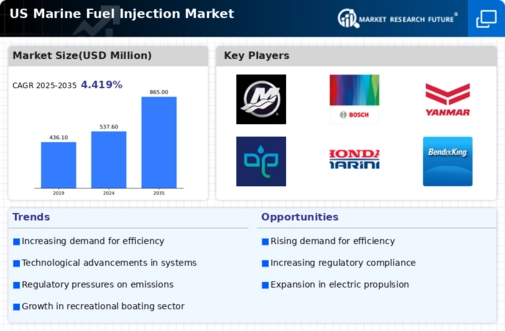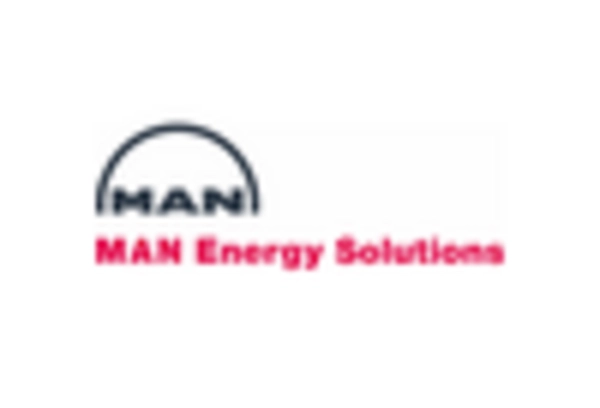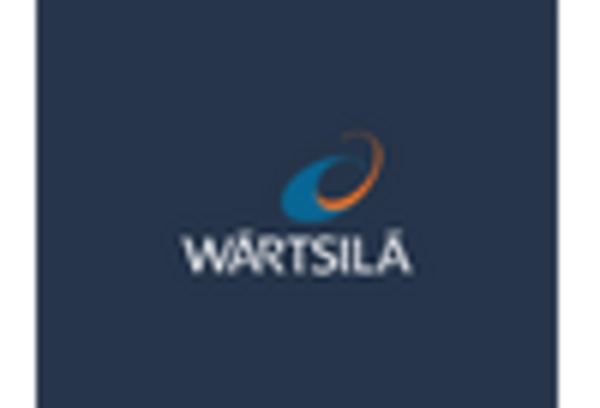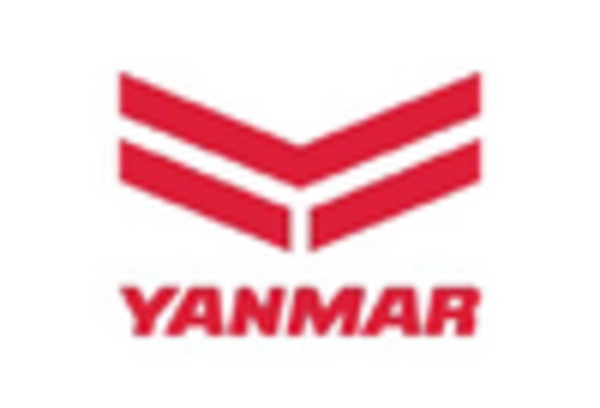Shift Towards Enhanced Safety Standards
The marine fuel-injection market is increasingly shaped by the shift towards enhanced safety standards in maritime operations. As safety regulations evolve, there is a growing emphasis on the reliability and performance of fuel-injection systems to prevent accidents and ensure safe operations. The implementation of advanced fuel-injection technologies can significantly reduce the risk of fuel leaks and combustion-related incidents, thereby enhancing overall safety. This trend is particularly relevant in the context of aging fleets that require upgrades to meet contemporary safety standards. Consequently, the marine fuel-injection market is likely to experience growth as operators invest in modern fuel-injection solutions that not only comply with safety regulations but also improve operational reliability.
Growing Investment in Marine Infrastructure
The marine fuel-injection market is benefiting from increased investments in marine infrastructure across the US. As ports and shipping facilities undergo modernization to accommodate larger vessels and improve operational efficiency, there is a corresponding demand for advanced fuel-injection systems. The US government has allocated substantial funding for port upgrades, which includes the enhancement of fuel supply chains and the implementation of more efficient fueling technologies. This trend is expected to create a favorable environment for the marine fuel-injection market, with projections indicating a compound annual growth rate (CAGR) of 5% over the next five years. The focus on infrastructure development not only supports the adoption of modern fuel-injection systems but also aligns with broader economic growth initiatives.
Technological Integration in Marine Vessels
The integration of cutting-edge technologies in marine vessels is a key driver for the marine fuel-injection market. Innovations such as digital fuel management systems and real-time monitoring tools enhance the performance of fuel-injection systems, allowing for precise control over fuel delivery and combustion processes. This technological evolution is expected to improve fuel efficiency by approximately 10-20%, depending on the vessel type and operational conditions. Furthermore, the rise of automation in marine operations necessitates advanced fuel-injection solutions that can seamlessly integrate with other onboard systems. As shipbuilders and operators increasingly prioritize smart technologies, the marine fuel-injection market is likely to witness a robust expansion, with investments directed towards research and development of next-generation fuel-injection systems.
Increased Focus on Environmental Regulations
The marine fuel-injection market is significantly influenced by the tightening of environmental regulations aimed at reducing emissions from marine vessels. Regulatory bodies in the US have implemented stringent guidelines that mandate lower sulfur content in marine fuels, compelling ship operators to adopt advanced fuel-injection technologies that facilitate compliance. The International Maritime Organization (IMO) has set ambitious targets for reducing greenhouse gas emissions, which further propels the demand for efficient fuel-injection systems. As a result, the marine fuel-injection market is poised for growth, with an estimated increase in market size projected to reach $2 billion by 2027. This regulatory landscape not only drives innovation but also encourages the development of cleaner, more efficient fuel-injection solutions that align with environmental goals.
Rising Demand for Efficient Marine Operations
The marine fuel-injection market is experiencing a notable increase in demand driven by the need for enhanced operational efficiency in marine vessels. As shipping companies strive to optimize fuel consumption and reduce operational costs, the adoption of advanced fuel-injection systems becomes paramount. Reports indicate that vessels equipped with modern fuel-injection technology can achieve fuel savings of up to 15%, which is particularly appealing in a competitive market. This trend is further supported by the growing emphasis on sustainability, as efficient fuel usage directly correlates with lower emissions. Consequently, the marine fuel-injection market is likely to see a surge in investments aimed at upgrading existing fleets with state-of-the-art fuel-injection systems, thereby enhancing overall performance and compliance with environmental standards.

















Leave a Comment